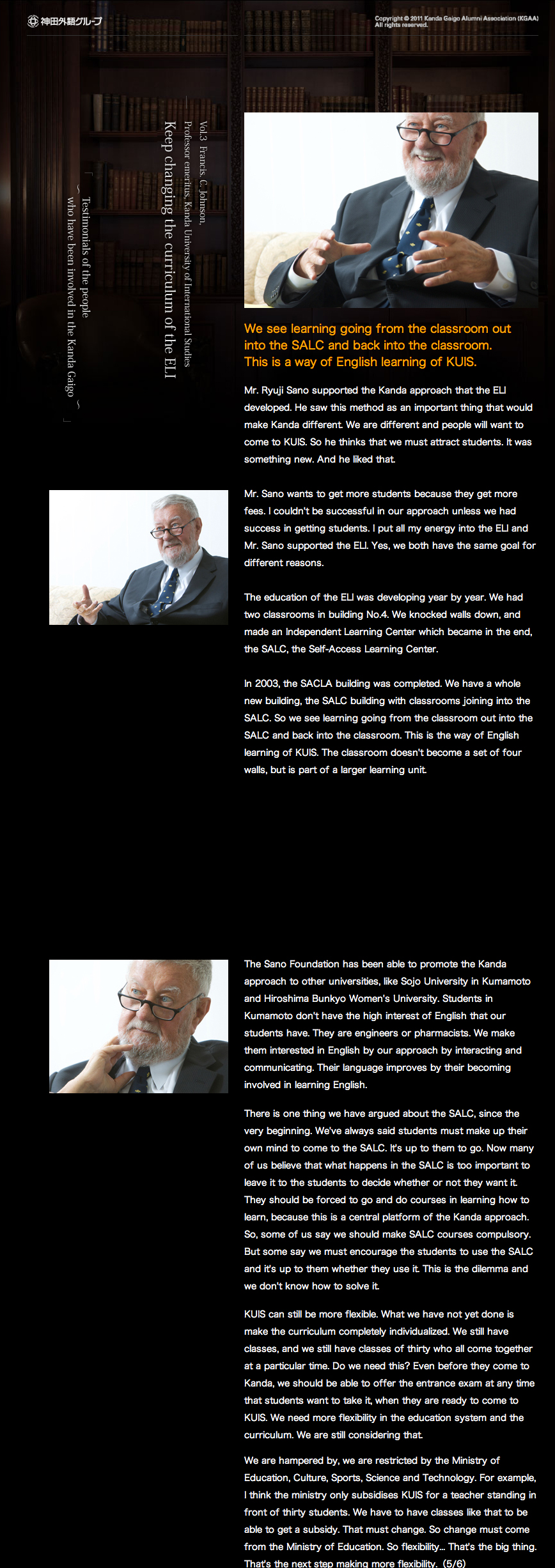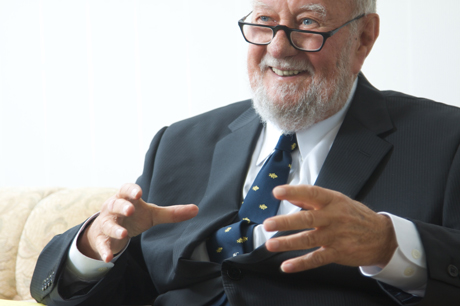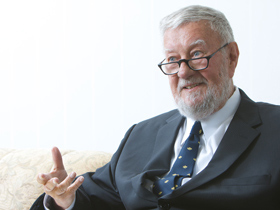

Copyright © 2011 Kanda Gaigo Alumni Association(KGAA). All rights reserved.
50th Anniversary -Interviews-

Mr. Ryuji Sano supported the Kanda approach that the ELI developed. He saw this method as an important thing that would make Kanda different. We are different and people will want to come to KUIS. So he thinks that we must attract students. It was something new. And he liked that.

Mr. Sano wants to get more students because they get more fees. I couldn't be successful in our approach unless we had success in getting students. I put all my energy into the ELI and Mr. Sano supported the ELI. Yes, we both have the same goal for different reasons.
The education of the ELI was developing year by year. We had two classrooms in building No.4. We knocked walls down, and made an Independent Learning Center which became in the end, the SALC, the Self-Access Learning Center.
In 2003, the SACLA building was completed. We have a whole new building, the SALC building with classrooms joining into the SALC. So we see learning going from the classroom out into the SALC and back into the classroom. This is the way of English learning of KUIS. The classroom doesn't become a set of four walls, but is part of a larger learning unit.

The Sano Foundation has been able to promote the Kanda approach to other universities, like Sojo University in Kumamoto and Hiroshima Bunkyo Women's University. Students in Kumamoto don't have the high interest of English that our students have. They are engineers or pharmacists. We make them interested in English by our approach by interacting and communicating. Their language improves by their becoming involved in learning English.
There is one thing we have argued about the SALC, since the very beginning. We've always said students must make up their own mind to come to the SALC. It's up to them to go. Now many of us believe that what happens in the SALC is too important to leave it to the students to decide whether or not they want it. They should be forced to go and do courses in learning how to learn, because this is a central platform of the Kanda approach. So, some of us say we should make SALC courses compulsory. But some say we must encourage the students to use the SALC and it's up to them whether they use it. This is the dilemma and we don't know how to solve it.
KUIS can still be more flexible. What we have not yet done is make the curriculum completely individualized. We still have classes, and we still have classes of thirty who all come together at a particular time. Do we need this? Even before they come to Kanda, we should be able to offer the entrance exam at any time that students want to take it, when they are ready to come to KUIS. We need more flexibility in the education system and the curriculum. We are still considering that.
We are hampered by, we are restricted by the Ministry of Education, Culture, Sports, Science and Technology. For example, I think the ministry only subsidises KUIS for a teacher standing in front of thirty students. We have to have classes like that to be able to get a subsidy. That must change. So change must come from the Ministry of Education. So flexibility... That's the big thing. That's the next step making more flexibility.(5/6)
Contact: Kimiyo WATANAE
PR department / Sano Educational Foundation
Telephone: +81-33258-5837
http://www.kandagaigo.ac.jp/
Photographer: Hideki SHIOZAWA
http://www.shiozawahideki.com/